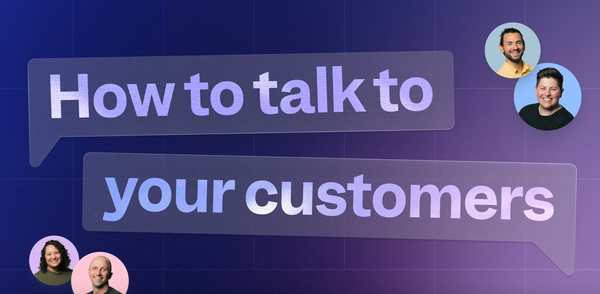Ditch the Product: Prioritizing Problems in Sales Prospecting
Introduction: The Conversation That Changed Everything
Early this morning, I received a call from a new Sales Development Representative (SDR) looking for some guidance. Her enthusiasm was palpable, but so was her uncertainty. The first question she asked me was simple yet profound: “What’s your top piece of advice?”
Without hesitation, I responded, “Ditch the product.”
This might seem counterintuitive, especially in sales, where product knowledge is crucial. However, the key to successful prospecting lies in understanding the prospect’s world, not just your product. Here’s a deep dive into why prioritizing the problem over the product is essential and how you can implement this strategy.
Step 1: THE PERSONA
- Who is Your Buyer?Understanding who you’re selling to is the first step. Your buyer’s persona includes their job title, industry, company size, and more. Knowing this helps tailor your approach.
- What Do They Care About?Each buyer has specific interests and concerns. Identify what matters most to them, whether it’s efficiency, cost-saving, innovation, or customer satisfaction.
- What Are Their Roles + Responsibilities?Document their daily tasks, responsibilities, and pressures. This insight allows you to empathize with their situation and tailor your pitch accordingly.
Step 2: THE PROBLEM
- What Are the Common Problems They Face?Every industry and role has its set of challenges. List the common problems your target persona encounters.
- The Problems Your Product Actually Solves ForClearly define how your product addresses these challenges. Be specific and avoid jargon.
- Document Without Using Any Product Jargon or BuzzwordsExplain the problems and solutions in plain language. This ensures clarity and avoids alienating potential customers with technical terms they may not understand.
Step 3: THE IMPACT
- Negative Impact If the Problem Is Not SolvedDetail the consequences of not addressing the problem. This might include financial losses, decreased efficiency, or missed opportunities.
- Negative Consequence of Remaining Status QuoHighlight the dangers of sticking with the current situation. What’s the cost of inaction?
- Ripple Effect of the Problem on Them and the TeamExplain how the problem affects not just the individual but also their team and the broader organization. This creates a sense of urgency.
Step 4: THE METRICS
- What Is Your Buyer Typically Accountable For? Metric or KPI They Are Measured On UsuallyIdentify the key performance indicators (KPIs) or metrics that your buyer is responsible for. These could be sales targets, customer satisfaction scores, or operational efficiency.
- How Is the Metric or KPI Affected by the ProblemShow the direct correlation between the problem and these metrics. Demonstrate how solving the problem positively impacts their KPIs.
Implementing the Strategy: From Documentation to Understanding
Once you’ve documented the persona, problem, impact, and metrics, the next step is to digest and understand this information thoroughly. This foundation is crucial for effective prospecting.
By putting yourself in your prospect’s shoes, you’ll be better equipped to engage in meaningful conversations. Instead of pitching your product, you’ll be addressing their most pressing concerns, which is far more compelling.
Why Understanding the Product Still Matters
While this approach emphasizes the problem over the product, it doesn’t mean you should ignore your product’s capabilities. Understanding what your product can do is essential, but it should serve as a tool to solve the prospect’s problems, not the centerpiece of your pitch.
Conclusion: The Prospect’s World Is Your Priority
Your prospects are not waiting to hear about how great your product is. They are busy dealing with their day-to-day challenges. By prioritizing their problems over your product, you position yourself as a partner rather than a salesperson. This approach not only makes your prospecting more effective but also builds trust and credibility.
So, to every new SDR and AE out there: ditch the product. Understand the problems, empathize with your prospects, and watch your success soar.
Keywords: SDR tips, sales prospecting, sales development representative, sales strategy, understanding customer problems, prioritizing customer issues, effective sales techniques, prospecting advice, customer empathy in sales, solving customer problems.
By focusing on the prospect’s problems, understanding their world, and articulating the impact and metrics, you lay a solid foundation for successful sales prospecting. Remember, your product is a tool to solve their problems—not the main attraction.


